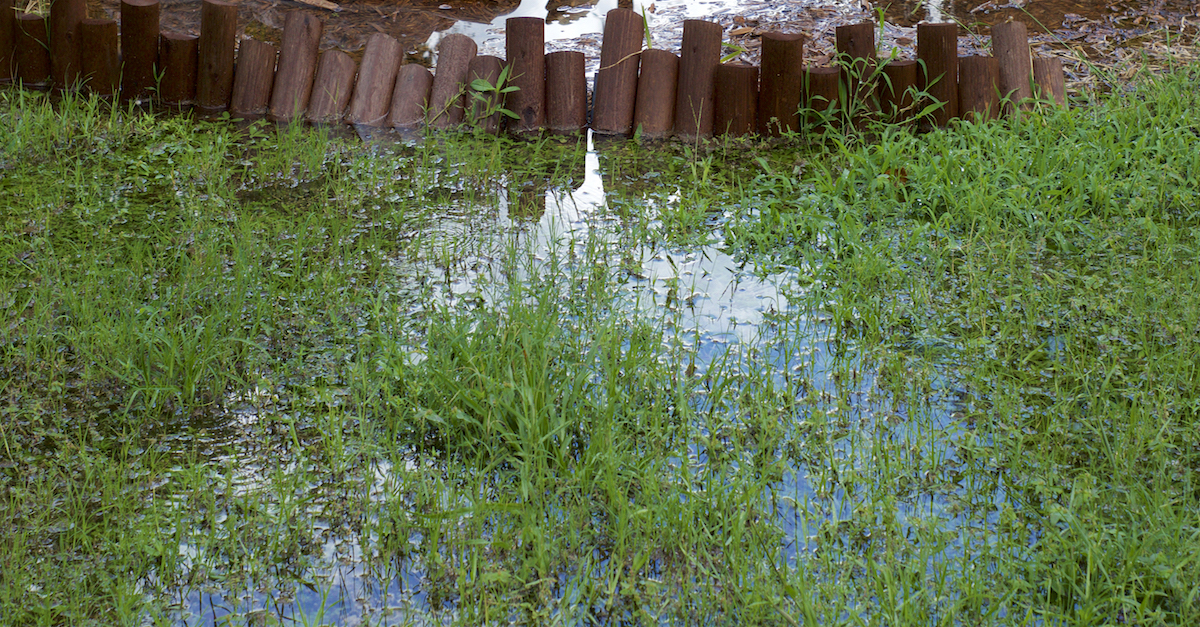If rainwater collects in your yard, you can wind up with large pools that can damage the landscaping and flood your basement. If your yard has repeatedly flooded after rainstorms, you have a serious drainage problem that needs to be addressed to avoid costly damage.
How to Control Localized Flooding
Sometimes a yard floods in one area because it is lower than the rest of the yard. If that’s the case, you can handle the problem by simply raising the elevation of that area by adding topsoil or heavy mulch.
In other cases, the best way to redirect rainwater is to create a swale, or a depression in the yard that can guide runoff to a particular area. Lining the bottom with rocks and deep-rooted plants can control the flow of water.
Another way to deal with localized flooding is to install a rain garden. This is an area where you plant vegetation that requires a lot of water and that has deep roots. You can also install drains to prevent too much water from accumulating. A rain garden does not redirect water, but rather, allows it to collect and slowly work its way down into the soil.
Ways to Deal With Widespread Flooding
One strategy to prevent large-scale flooding is to disperse water throughout the soil all over the yard. A French drain can accomplish this. A landscaper or drainage professional can dig a trench that goes deeper than the house in an area that tends to flood, install a perforated pipe, and fill in the hole with aggregate material to filter the water and stop debris from clogging the pipe. The French pipe will collect rainwater and direct it into the ground.
Another drainage solution is a dry well, or an underground perforated plastic well that collects and slowly releases rainwater. Like a French drain, a dry well should be installed in a hole below house level and surrounded by aggregate material. Pipes can be attached to the dry well to direct the flow of the water.
A sump pump can prevent flooding in both your yard and your house. It transfers water from the soil to pits. When a pit is full, the water is pumped away. This solution is more effective at preventing backyard flooding than a French drain or a dry well, but it is also more expensive.
Rainwater often collects in a driveway and runs off into the yard. If that’s the case at your home, you can add drainage along the edges of the driveway or replace your asphalt driveway with another material that will drain better, such as gravel or grass.
Address Flooding Issues
A yard that regularly floods is a serious problem that can damage your landscaping and your house. Drainage issues can be handled in several ways, depending on the location and extent of the flooding. If rainwater collecting in your yard is a problem, contact a drainage company to find a solution.
